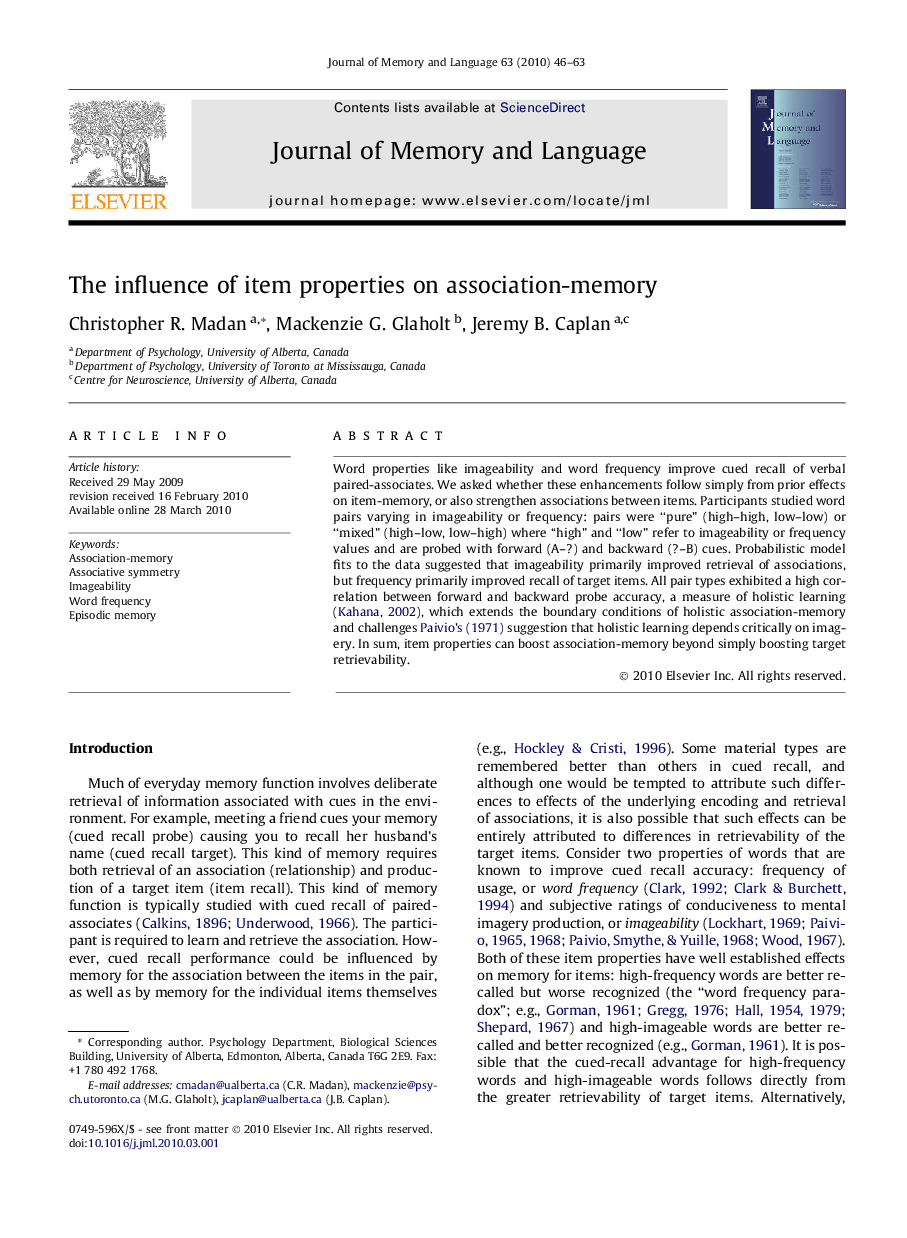| Article ID | Journal | Published Year | Pages | File Type |
|---|---|---|---|---|
| 932008 | Journal of Memory and Language | 2010 | 18 Pages |
Word properties like imageability and word frequency improve cued recall of verbal paired-associates. We asked whether these enhancements follow simply from prior effects on item-memory, or also strengthen associations between items. Participants studied word pairs varying in imageability or frequency: pairs were “pure” (high–high, low–low) or “mixed” (high–low, low–high) where “high” and “low” refer to imageability or frequency values and are probed with forward (A–?) and backward (?–B) cues. Probabilistic model fits to the data suggested that imageability primarily improved retrieval of associations, but frequency primarily improved recall of target items. All pair types exhibited a high correlation between forward and backward probe accuracy, a measure of holistic learning (Kahana, 2002), which extends the boundary conditions of holistic association-memory and challenges Paivio’s (1971) suggestion that holistic learning depends critically on imagery. In sum, item properties can boost association-memory beyond simply boosting target retrievability.
